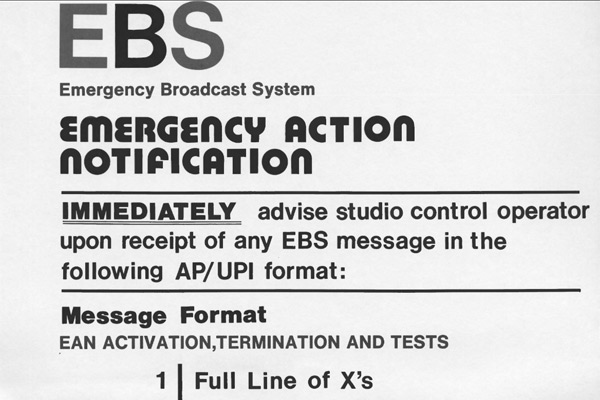Anyone feel safer that if-and-when President Donald Trump sits down to meet with North Korean dictator Kim Jong-un the number one guy advising Trump will be John Bolton, who thinks a preemptive strike on North Korea is a swell idea?
Relax. Even if things go sideways and it’s the end of the world, we might not even know it. Just like you probably didn’t know about the national security alert that went out in 1971 that has eerie parallels between the false missile alert this past January in Hawaii.
In fact, the National Guard report issuing recommendations to spend millions to prevent another false warning came out on Feb. 20—the 47th anniversary of the day I was the senior broadcast director at a Chicago television station tasked with triggering such a warning—which also turned out to be a false alarm.
And more recently a Federal Communications Commission report pointed out that some of the 20,000 broadcasters, cable operators, and other Emergency Alert system participants in a 2016 test failed to receive or retransmit alerts due to "erroneous equipment configuration, equipment readiness and upkeep issues, and confusion regarding EAS rules and technical requirements.” Reports from FEMA and the FCC about 2016 emergency broadcast alert tests cited system and software failures including system clock errors, outdated software and equipment configuration problems. One FM station reported that “an owl's nest obstructed the transmission.”
So they apparently still haven’t figured out how to make the alert system work efficiently in the nearly 50 years since my days at WSNS-TV, Channel 44.
Back then, in the early 70s it was routine to have an emergency broadcast test on a Saturday morning, but it was always clearly a test. So the three of us manning the station that day were startled when the newly installed Emergency Broadcast System went off simultaneously with the “bells” on the AP and UPI newswires that indicated this was an official “Attack Warning.”
We rushed to the locked box in the corner of the room to check the “authenticator” password for moments such as this—and all froze when we realized the correct password, “HATEFULNESS,” was on both the wires and in the locked box.
A few months earlier, I had helped record the “Attack Warning” audiotape with the station announcer. It scared the hell out of me. It said the United States was under attack, included a serious plea from the North American Air Defense Command to take shelter immediately and then an authoritative voice urgently repeated: ‘This is not a test.”
I thought about how our viewers would go into a panic if we played it on what was then the newest station in town, which billed itself as “Your Friendly Neighborhood Television Station.” Most mornings featured mainstream printed news, sports scores, traffic updates and birthday wishes scrolling across the screen while elevator music played—all the way until 6 p.m. when the station came alive with local programing.
So I called the station manager. He asked me if I learned about emergency alerts in college. When I answered “yes” he told me to obey the F.C.C. rules and hung up.
Now the decision was up to me, a 23-year-old television producer/director who had just graduated from college the year before.
F.C.C. rules required that I play the horrific attack warning tape and then order the transmitter be turned off so that only stations designated to issue further instructions remained on the air.
With the end-of-the-world-as-we-know-it tape hidden in my desk drawer, I thought back to my grammar school days in the 1950s when we had practiced hiding under our desks with our coats over our heads. Schoolchildren were even shown "Duck and Cover" cartoons, as if that would really save us if the dreaded Communists launched a nuclear attack.
I considered how playing the tape would panic the little kids flipping through the channels searching for a good Saturday morning cartoon and took the middle path. I did not play the attack warning but I gave the order to shut down the transmitter. That would funnel viewers to the stations designated to issue more emergency information.
Many stations did the same, but some panic also ensued when some stations actually played the warning, as the New York Times reported the next day.
Most appeared to have totally ignored the warning and within minutes the wire services attempted to retract it, but no password was provided. That appeared about 40 minutes later–almost exactly as long as it took to retract the recent Hawaiian false alert–when the word “IMPISH” came across the wires.
Television producer Howie Samuelsohn is currently working with an L.A. studio to re-boot the original Underground News Show, which was syndicated from Chicago’s WSNS-TV, Channel 44 and featured counter-culture icons John Lennon, Jane Fonda, Joan Baez, the Black Panthers, Abbie Hoffman, and Daniel Ellsberg among many others.
Marla Donato contributed to this report.



